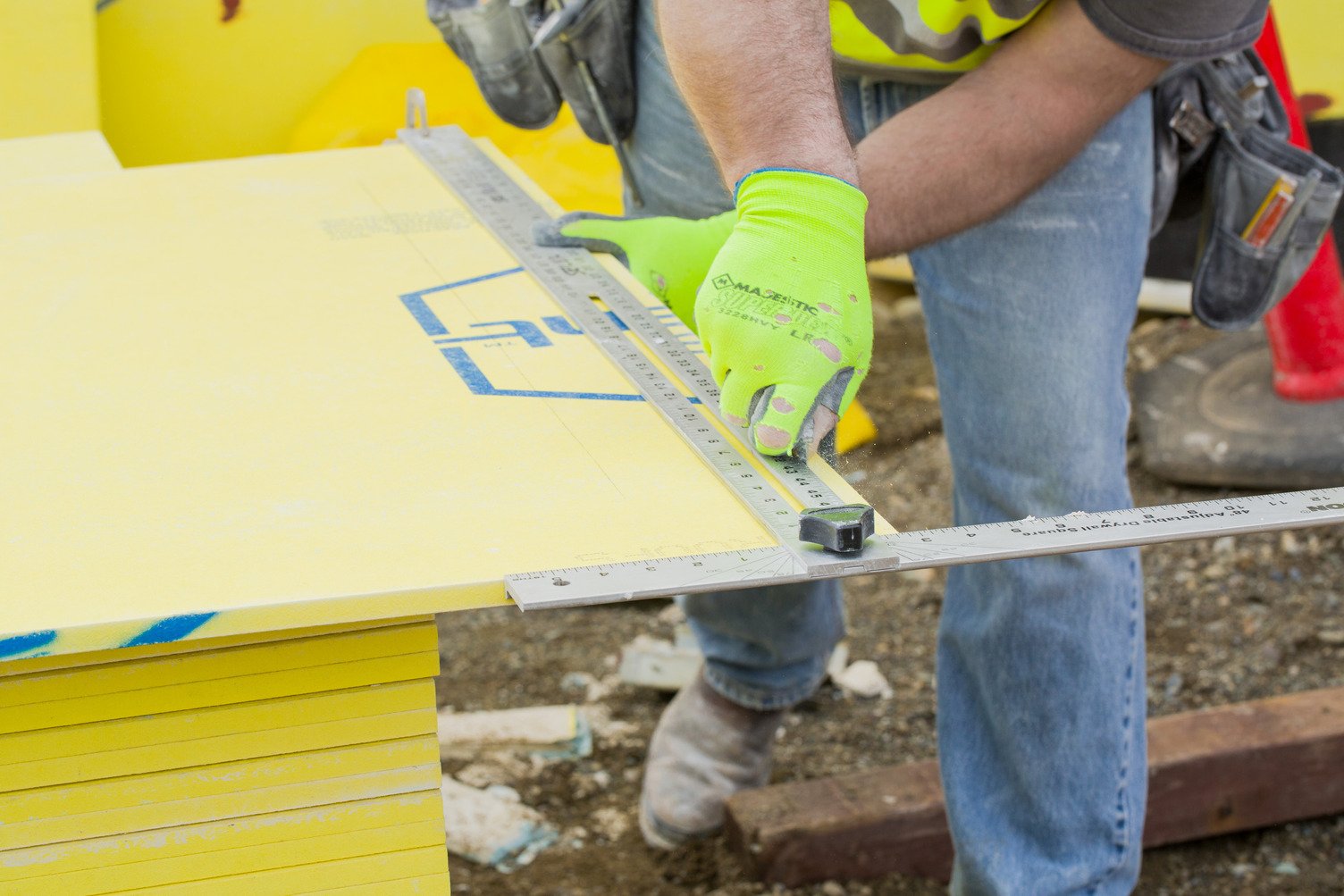Match Your WRB-AB to Your Performance and Labor Needs

Air and water barriers have come a long way. Which one is right for your project?
Building construction is a balancing act: Owners’ needs vs. residents’ wants, construction timeline vs. trade crew availability, design innovation vs. code requirements. The list goes on, and one of the biggest matchups is the three-way relationship between building performance, material cost, and installation expertise.
“We want buildings to perform better, so we’re paying closer attention to how we’re actually constructing them,” says John Chamberlin, Senior Product Manager at GP Building Products. “But at the same time, we’ve lost a lot of people who are able to construct those buildings to the new standards we’ve set.”
With this in mind, choosing a water-resistant barrier and air barrier (WRB-AB) that’s both cost-effective and easy to install is more important than ever. Here’s a look at the pros and cons for a variety of choices.
Building Wrap Over Sheathing
Moisture resistance is one of the best gifts you can give to your building, so covering the sheathing with weather-resistant wrapping paper is fitting. In use since the 1960s, building wraps are among the most economical WRB solutions, as long as they’re properly installed.
“Building wraps can work, but their kryptonite is wind,” Chamberlin says, noting that commercial installation usually requires cap fasteners (not just staples). “Installers also have to ensure they’re cutting and folding the material properly around rough openings, and appropriately lapping and taping everywhere to make a complete barrier.”
Building wrap technology has advanced over the years. Specifiers have several fabrics and accessories to choose from and will need to match those options to the application.
Liquid-Applied and Self-Adhered Barriers
First introduced around 2000, liquid-applied WRBs create a continuous coating that tightly seals the building against both water and air intrusion without additional fasteners. Though more expensive than building wrap, liquid-applied barriers go one easily, and take the guesswork out of protecting buildings from the elements – or do they?
Almost anyone can apply this type of WRB with a roller or sprayer, but that low level of required experience could be a disadvantage. “With liquid-applied, you have to have the right mil thickness on all areas of the building, which can be hard for a novice installer to achieve,” he says. If the mil gauge is too thin, the barrier won’t perform the way it’s designed, but reapplying over the thin spots adds extra labor to the project. On the other hand, if the coating is applied too thickly to start with, it can hinder drying time, affect performance, and cost money by using more material than necessary.
Dry time and weather condition requirements are also important factors when selecting a WRB. Chamberlin says both liquid-applied and self-adhered (peel-and-stick) barriers often need extended dry, temperate conditions to ensure proper application and performance. Self-adhered membranes have other pros and cons to consider as well. Their impressive flexibility and strong adhesion often makes them excellent for use around rough openings and other wall penetrations. However, if seams aren’t fully adhered or properly lapped, these low-permeability materials can actually trap and hold moisture that finds its way in. The result is a WRB that actually causes or accelerates the moisture damage it’s designed to prevent.
WRB-Integrated Sheathing
Products like GP’s DensElement® Barrier System with DensDefy™ Accessories takes some of the extra steps (read: labor cost) out of the installation process. With the WRB factory-applied to the sheathing, installers don’t need to walk the building again with a building wrap, and installers can feel confident in the coating’s uniform thickness and cure.
DensElement® Barrier System’s gives specifiers a product that matches demanding building code requirements with tried-and-true installation and performance expectations.

Chamberlin says the balance between performance, cost, and installation has become a battle ground for the world of WRBs. “We have a heightened awareness of how buildings should perform, and we’ve applied that so the buildings are forced to be better than they were 40 years ago,” he says. “As you go through the evolution of water-resistant barriers and air barriers, they all work if they’re installed correctly, but specifiers will need to weigh a variety of factors like budget, climate, and how long the building is expected to last, to choose the right one for their project.”